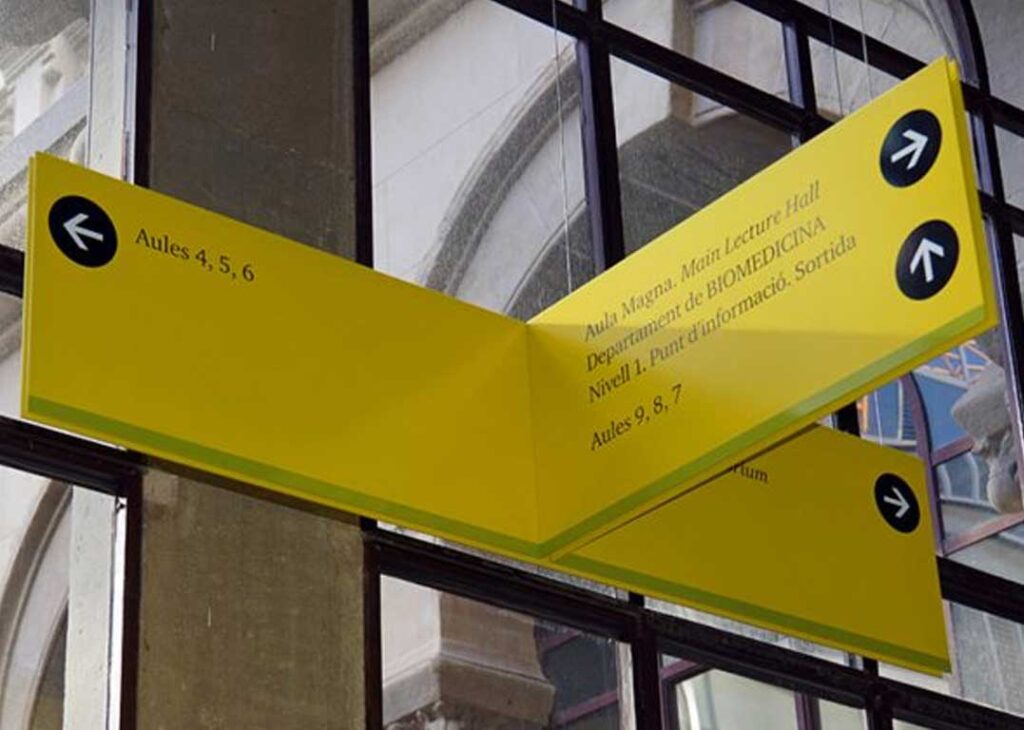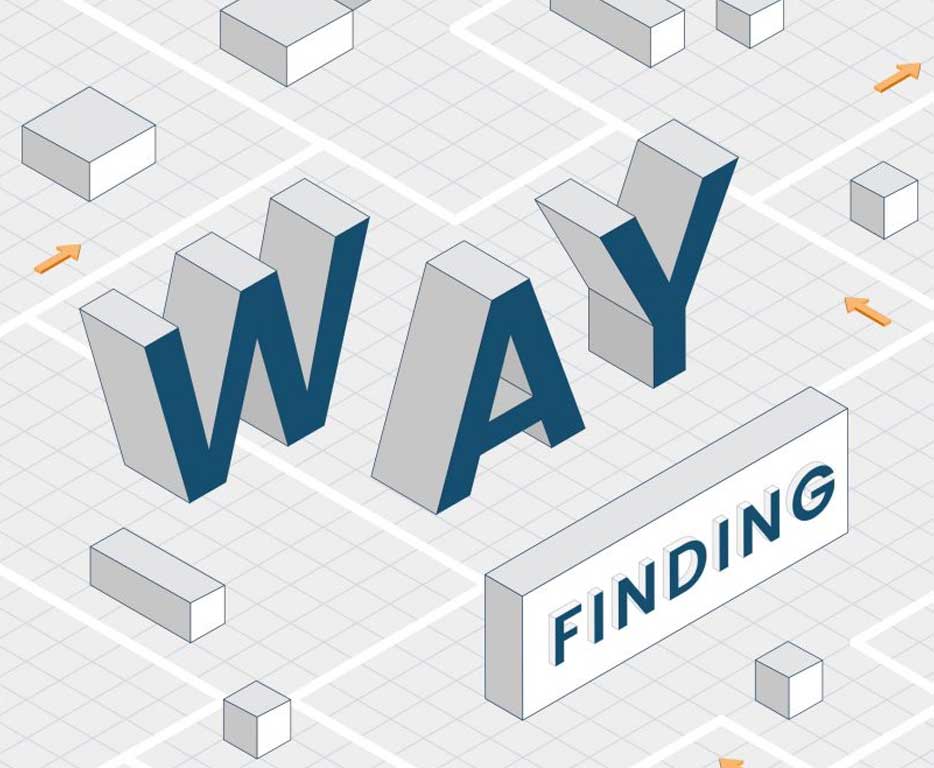#Wayfinding es el proceso de entender el espacio y diseñar señales para ayudar a las personas a navegar en un entorno, ya sea a pie o en un vehículo. No se trata solo de señalización, wayfinding… une disciplinas como diseño gráfico, arquitectura, paisajismo, iluminación, arte y tecnología para crear un sistema de navegación en el espacio ajustado a las necesidades. Cuando el diseño está bien ejecutado, el wayfinding ayuda a las personas a llegar fácilmente a sus destinos prácticamente sin darse cuenta realmente de cómo lo hicieron.
Comprehensive wayfinding systems often combine signage, maps and symbols that are complemented by mobile applications and digital displays. Such a #project requires an expert analysis of the space, good planning and a well thought out implementation process.
In some circumstances, a good wayfinding study can be of vital importance. Signage in #hospitals is a good example, when patients are trying to attend an important appointment or receive urgent medical care they shouldn’t get lost in the hallways or end up asking at the information desk. These situations create unnecessary stress for patients who may be facing major health challenges.

#Aeropuertos, estaciones de tren y las líneas de metro son también otro un buen ejemplo, la falta de señalización podría causar gran interrupción, ya que muchos pasajeros tendrían dificultades para encontrar las plataformas o puertas de embarque a tiempo para hacer sus conexiones. ¿Te imaginas cómo de complejo sería moverte por el metro de Madrid o Barcelona sin señales?
The first step in such a project is to study the architecture, the interior design and the culture of the place. Good signage is characterized by its simplicity, it must integrate harmoniously into the space and adapt to the needs of all users. Imagine, for example, if the signaling system were only visual, how would a blind or visually impaired person make his way?

The routes and types of users are studied, always from the point of view of the first-time visitor, taking into account those with reduced mobility. This study identifies those crossroads and decision points where we will have to reinforce with messages.
The graphic development of the pieces is also essential to achieve a good result; the choice of an appropriate typography, the colors, the type of icons or the choice of materials suitable for adverse weather conditions, will be key for the signage set to work.
Simplicity and clarity of messages are also of vital importance in a wayfinding study: Regardless of its purpose, anyone should be able to look at a sign and know in seconds what it says, whatever their culture or language.
In summary: signage derived from a wayfinding study conveys security and facilitates the use of an anonymous space. Orientation and answers to all questions, transmits confidence and comfort; anticipates users’ needs or doubts, avoiding uncertainty and chaos.. It dramatically improves the quality of the user experience in a space and facilitates accessibility.
At Signes -since 1982- that’s all we do: solve signage needs.
